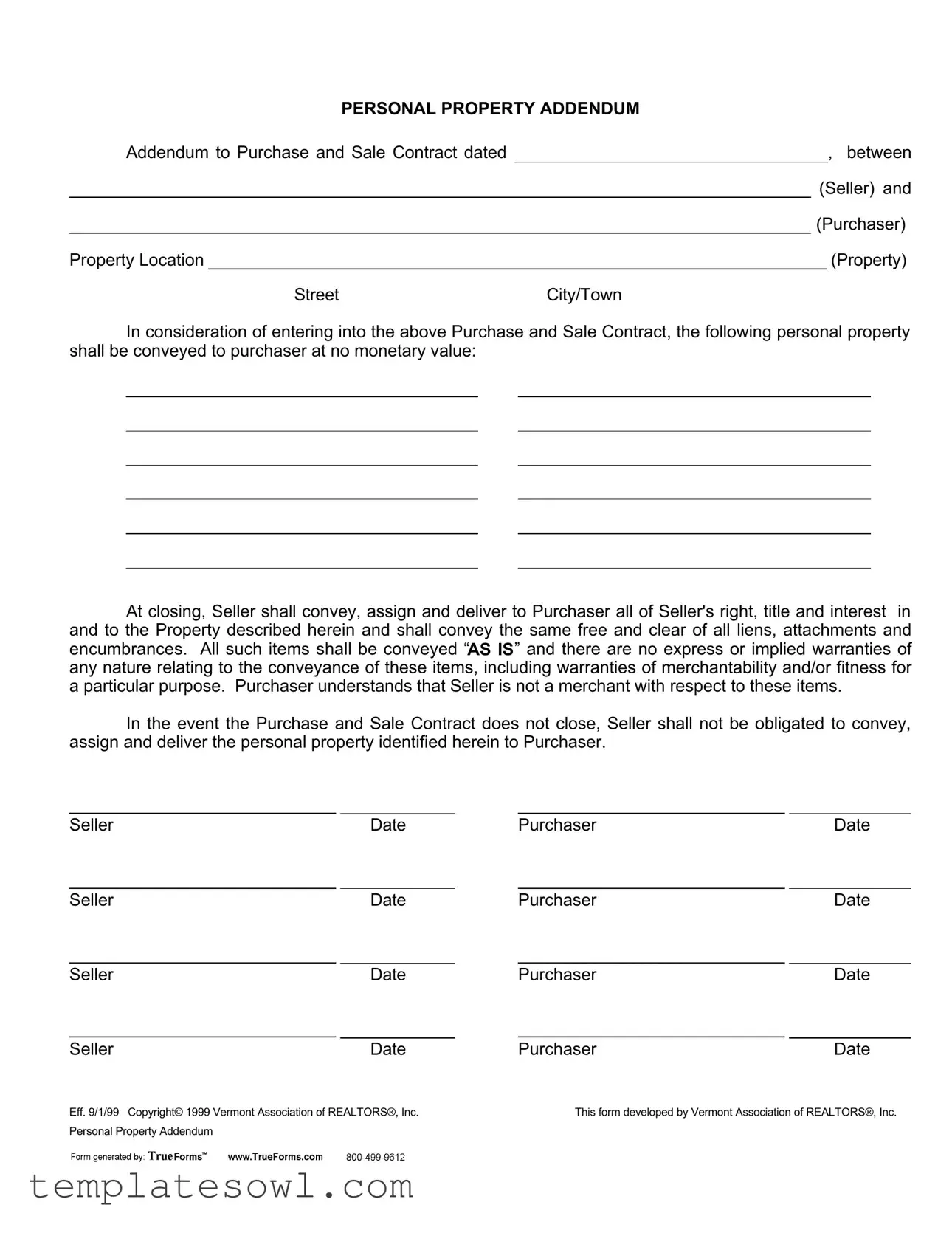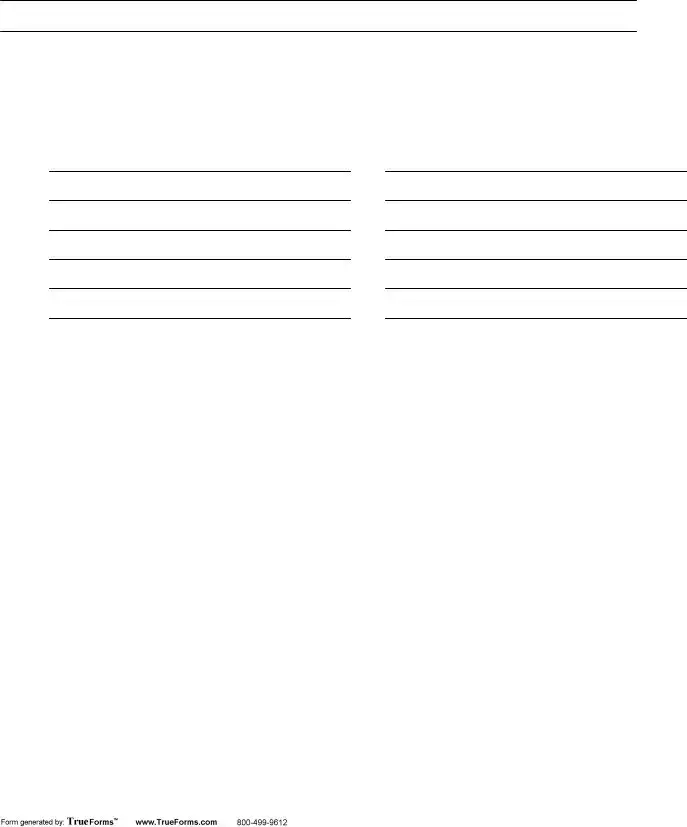What is the Purchase Addendum Vermont form?
The Purchase Addendum Vermont form is an addendum to the Purchase and Sale Contract. It outlines the personal property that will be included in the sale of real estate. The form specifies what personal items the seller will convey to the purchaser at no additional cost during the closing of the sale.
What personal property is covered by this addendum?
This addendum allows for the inclusion of specific personal property that the seller agrees to transfer to the purchaser. The exact items should be clearly listed in the addendum, ensuring both parties understand what is included without any additional charges.
What does “AS IS” mean in the context of this form?
When the form states that items will be conveyed “AS IS,” it means the seller will not make any repairs or improvements to the personal property. The purchaser accepts the items in their current condition, which may include flaws or issues. There are no warranties regarding the quality or usability of the items.
What happens if the Purchase and Sale Contract does not close?
If the Purchase and Sale Contract does not close, the seller is not required to convey the personal property listed in the addendum. This means that if the sale fails to finalize for any reason, the purchaser will not receive the personal items specified in this addendum.
Are there any warranties provided for the personal property?
No warranties are provided by the seller regarding the personal property. The addendum explicitly states that the seller is not a merchant and does not offer any express or implied warranties, including those related to merchantability or fitness for a particular purpose.
How is the transfer of ownership documented?
The transfer of ownership is documented by signing the Purchase Addendum Vermont form. Both the seller and purchaser must date and sign the document to acknowledge their agreement regarding the conveyance of the personal property included in the sale.
Can changes be made to the personal property items listed?
Yes, changes can be made to the items listed in the addendum. However, any modifications must be documented properly and agreed upon by both parties in writing prior to closing to avoid confusion or disputes.
Who should complete this form?
This form should be completed by the parties involved in the real estate transaction: the seller and purchaser. Each party should have a clear understanding of the items being included in the sale and execute the document to reflect their intentions accurately.

